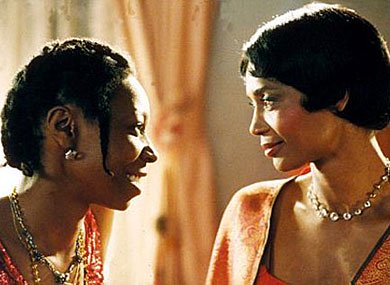
Ancient Words of Wisdom Series: The Daodejing and The Color Purple
By Leigh Pittenger
Series 1: Daodejing of Laozi
Entry #3: The Daodejing and The Color Purple
Or: Embracing Mystery
Chapter 1
A Way that can be followed is not a constant Way.
A name that can be named is not a constant name.
Nameless, it is the beginning of Heaven and Earth;
Named, it is the mother of the myriad creatures.
And so,
Always eliminate desires in order to observe its mysteries;
Always have desires in order to observe its manifestations.
These two come forth in unity but diverge in name.
Their unity is known as an enigma.
The gate of all mysteries!
If you’re like me, someone who likes clear definitions, the opening lines of the Daodejing might give you pause. Here the book introduces its most important term: the Way (or the Dao). But does it help us to understand the Way? Or does it elicit some puzzlement?
Pondering this passage, I find myself recalling one of my all-time favorite novels, Alice Walker’s The Color Purple. You might be surprised at this connection. How can this compilation of wisdom from ancient Chinese sages remind me of Alice Walker’s brilliant novel? Allow me to explain. . . .
Western culture often displays a preference for clear explanations and linear arguments. (Here I might specify white Western culture.)
When I was in school, I was trained to define my terms. I learned that complex concepts are quite difficult to pin down. How do you define “yoga,” for example? How about “race,” or “freedom,” or “justice”? How about “spirituality” or “God”?
Attempting to define such terms for ourselves is a valuable exercise if we want to be able to communicate with others and be able to affect change in the world.
But, on the other hand, definitions can be limiting. Reducing a broad concept to a narrow definition, we also constrict our perception. We might forget that other people conceptualize the same terms differently than we do. Similarly, we sometimes assign labels to others (or to ourselves) that distort our perceptions and diminish our appreciation of others’ worth. The history of white supremacy in America illustrates how much suffering ensues when the dominant group tries to force its own limited views and stereotypes on other people.
The Daodejing resists providing a definition that will limit our conception of the Way. Instead, its explanation implies that the Dao transcends the limits of human logic. It begins:
“A Way that can be followed is not a constant Way.
A name that can be named is not a constant name.” (Philip J. Ivanhoe’s translation)
Imagine the translator’s difficulties! Here are some examples of other translators’ attempts:
“The Dao that can be trodden is not the enduring and unchanging Dao.
The name that can be named is not the enduring and unchanging name.”
(James Legge)
“The Dao that can be told of is not the Absolute Dao;
The Names that can be given are not Absolute Names.”
(Yutang Lin)
“The Dao that can be Dao’d is not the Absolute Dao;
The name that can be named is not the absolute name.”
(Holmes Welch)
Reflecting on this ultimately Nameless, inconceivable Way reminds me of learning about God.
When I was a child, my parents required my Sunday morning attendance at church. The small (white) evangelical congregation in Middle Tennessee where I was raised transmitted quite fixed notions of who God is. I was taught that God is the Almighty, the Creator of the Universe, the strict Judge who determines whether we all go to Heaven or Hell, and so forth. I was taught that God frowns upon a long list of human activities like: drinking, smoking, dancing, listening to rock music, or associating with “godless sinners.” I learned that particular names were considered acceptable for describing God, while others most certainly weren’t. “Father” was considered appropriate, for example, but “Mother” wasn’t. And, while I didn’t consciously think of God as “white,” the commonplace (though historically inaccurate) images of a blue-eyed, pale-faced Jesus subconsciously penetrated my mind.
Reading Alice Walker’s The Color Purple in college shattered my limited conceptions of the divine. When the book’s main character, Celie, confides in the free-spirited Shug that she’s angry at God, Shug asks her to articulate her image of God. Celie answers, “He big and old and tall and graybearded and white.”
Shug lovingly offers a different view of God, a far more liberating one. She suggests that God is something to be found inside oneself—a God who wants us to be delighted by beauty and pleasure, a God who wants us to appreciate the color purple, for example, when we pass by the wildflowers in the fields. When Celie asks Shug what her God looks like, Shug replies that God transcends limited words and images:
“Don’t look like nothing, she say. It ain’t a picture show. It ain’t something you can look at apart from anything else, including yourself. I believe God is everything, say Shug. Everything that is or ever was or ever will be. And when you can feel that, and be happy to feel that, you’ve found It.”
Shug had broken free of a narrow, oppressive conception of God and entered an experience of self-acceptance, joy, and freedom. She helped the character of Celie (and me as well!) to do the same.
The opening lines from the Daodejing invite us to dwell in a place that might feel uncomfortable sometimes, a place of uncertainty and mystery—“the gate of all mysteries!” But if we can open ourselves to welcoming Mystery, we might find ourselves in an open, free space, maybe even dancing in a field of purple flowers.
For reflection:
- When you read the opening lines of the Daodejing, do you find yourself longing for a more comprehensible explanation of the Way? Or, rather, do you find yourself intrigued by the mystery and the paradox—the incomprehensibility—of the Way?
- Can you think of situations in your own life when you have felt restricted by someone else’s narrow conception of you? Or, conversely, when your own perception of something or someone else has been limited by a false label? Have you ever gained from losing a previous certainty and stepping into a more open place?
About the Author: Leigh Pittenger
With a PhD in Religious Studies from Emory University, Leigh has taught courses in world religions at Rhodes College and Christian Brothers University in Memphis. She enjoys studying and teaching sacred texts that have influenced yoga, including the Bhagavad Gita, the Yoga Sutra, and the Daodejing of Laozi.

